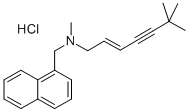It is estimated that 100-150 kilograms of fresh mushroom can be produced per 100 kilograms of corn cob, and the bioconversion rate is 150%-250%. Material selection and processing. The corncob that was fresh and without mold during the year was exposed to sunlight for 2-3 days and crushed into corn kernels without sieving.
Recipe: Corncob 79%, bean straw 15%, lime 4%, gypsum 1%, calcium superphosphate 1%, urea 0.3%, Kemodolin 0.1-0.15%. Preparation method: First dissolve the lime and urea in water and stir in the material. The ratio of water to material is 1:1. Stacking fermentation. Spread the plastic film on the ground and stack it into 1.5m wide, 1m high, and unlimited length piles. Play a few holes through the bottom of the pile randomly down through the bottom of the pile, and then cover with a plastic film or straw curtain to stack and ferment. After 1 day, measure the heap. Temperature, if more than 60 °C, keep turning for 6 hours, turn the material inside, turn the inside to the outside, and then pile up, ferment to 60 °C, maintain 12-24 hours after the heap, the fermentation is completed.
Loading and inoculation. When the material temperature drops below 30°C, it can be bagged, and a 4722 cm polyethylene tube bag is used to inoculate according to the three-layer material two-layer inoculation method, that is, one layer of material at both ends (about 2 cm at each end). The dense head is appropriate, each layer of bacteria species), the seeding rate is 15% of the weight of the material, and then the species of the material bag is tied, and then play 3-4 ventilation eyes at both ends (to make mushroom).
Hyphae cultivation. Two days after sowing, the temperature of the material began to rise. Attention should be paid to changes in the temperature of the material every day. After three to five days, the reactor should be turned one at a time. After another eight to ten days, the reactor should be turned again to prevent the material temperature from rising above 35°C. When the temperature of the material rises to 32°C, the doors and windows should be opened in time to ventilate and water should be sprayed to the ground to reduce the accumulation level. The bacterium bags should be evacuated so that the heat in the bag can be quickly dissipated to reduce the temperature of the material. The temperature of the bag should be controlled at 25 About °C, about 10 days will turn the bag 180 degrees, so that the bottom of the stagnant water, in order to facilitate the uniform bacteria, 20 days or so and then pour bag once, put the mycelium growth good bag together, poorly put Together, they were contaminated, and the pollution was light. Open the mouth of the bag and put it in the shade for a few days or cover it with lime powder. The pollution was heavy and moved far away. The relative humidity of the indoor air is maintained at about 65%. Generally, after 25 days, the mycelium can be filled with bacterial bags.
Mushroom management. When the material surface is covered with white hyphae, the bacteria bags can be ventilated. The room temperature is maintained at 14-18°C and the relative air humidity is controlled at 85%-90%. Do not spray water buds, when the young mushrooms should be a small amount of water, grow to the size of beans, the number of water spray to increase, maintain air humidity 90%, at 10-25 °C under 5-7 days can be harvested. After the first mushroom was harvested, the indoor air was kept slightly dry, which promoted the growth of mycelia and accumulated nutrients, enhanced ventilation and light transmission, and normal management after the formation of the second mushroom. After finishing 2-3 oyster mushrooms, the replenishing water needle may be used to supplement the edible fungus increasing production factor such as triacontanol diammonium or potassium dihydrogen phosphate, etc. (it is appropriate to use 0.8-1 pounds of water per bag). The temperature during the entire mushroom growth period is controlled at 10-25°C and the humidity is 80%-95%.
Harvested. Pleurotus ostreatus grows from 28 days to 35 days. When the cap is mature, the fruit body is the heaviest and the yield is the highest. When harvesting, hold the mushroom handle and rotate it out. Do not hard-draw so as to avoid damage to the material surface and affect the mushrooming. The whole growth cycle can take 5-6 mushroom. (This article is provided by Han Chaozheng, Institute of Edible Fungi, Binhai County, Jiangsu Province, China. Tel 0515---4103012 13851113822)
An antifungal medication, also known as an antimycotic medication, is a pharmaceutical fungicide or fungistatic used to treat and prevent mycosis such as athlete's foot, ringworm, candidiasis (thrush), serious systemic infections such as cryptococcal meningitis, and others.
Antifungal pharmaceuticals include Terbinafine HCL, here is the structure:

An antibiotic (from ancient Greek αντιβιοτικά, antibiotiká), also called an antibacterial, is a type of antimicrobial drug used in the treatment and prevention of bacterial infections.
Sometimes the term antibiotic (which means "opposing life") is used to refer to any substance used against microbes.
Antifungal/Antibiotic/Antimicrobial
Nifuratel Drug Raw Material,Falvin Antifungal Agent,Dexamethasone Prednisone Cream,Voriconazole Powder 99%
Jinan Jianfeng Chemical Co., Ltd. , http://www.pharmachemm.com